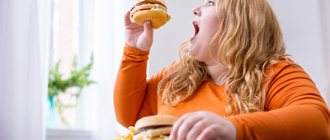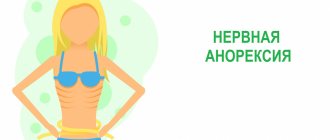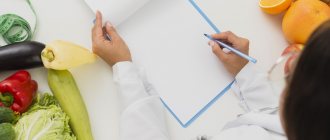Basic rules of therapeutic nutrition for low hemoglobin
The goal of therapeutic nutrition for anemia is to provide the body with all nutrients, vitamins and microelements, in particular iron, which is necessary to increase hemoglobin levels. This diet increases the body's defenses, restores its functions and improves the patient's quality of life.
The diet for iron deficiency anemia is physiologically complete, its calorie content is high, and the content of proteins, microelements and vitamins is increased. Carbohydrates remain at the standard level, and the fat content is slightly reduced.
According to Pevzner’s classification, the diet for iron deficiency anemia is treatment table No. 11. According to Order No. 330 of the Ministry of Health of the Russian Federation, in medical institutions, nutrition for this disease corresponds to a high protein diet (HPD).
Daily content of nutrients, vitamins and microelements:
- proteins – 120g, of which at least 60% are proteins of animal origin;
- fats – 80-90g, of which 30% vegetable fats;
- carbohydrates – 300-350g;
- vitamin A – 1 mg;
- carotene – 8.5 mg;
- vitamin B1 - 2 mg;
- vitamin B6 – 4 mg;
- nicotinic acid – 30 mg;
- vitamin C – 200 mg;
- sodium - 4g;
- calcium - 1.4g;
- magnesium - 0.6g;
- phosphorus – 2.2g;
- iron - 0.055g.
The energy value of the diet is 3000-3500 kilocalories per day.
Basic principles
- diet; Meals should be fractional: from 4 to 6 times a day. Frequent eating in small quantities stimulates the patient's appetite (and with anemia it is usually weakened), allows maximum absorption of nutrients, vitamins and microelements, and also normalizes the functioning of the digestive tract, which is important if the patient has concomitant diseases. Fractional nutrition allows the body to better perceive dishes and foods that are high in calories.
- treatment of the underlying disease; The main principle of treatment is the identification of disorders in the body that led to anemia and their correction. As is known, iron deficiency anemia is not an independent disease, but only one of the symptoms of a pathology. Therefore, following a diet will be ineffective without treating the underlying disease.
- food temperature; The food temperature should be standard, as in other diets (15-60 degrees Celsius). Too cold or hot food irritates the gastrointestinal tract, which negatively affects digestion and, in particular, the absorption of iron.
- culinary processing; Any culinary processing of products (stewing, steaming, boiling or baking) is allowed, except for frying. When frying, a large amount of fat is used, which is contraindicated in case of anemia; products of their oxidation are formed, which negatively affect the human body as a whole, and especially the digestive tract.
- preparation of dishes and serving; To stimulate the appetite of a patient with iron deficiency anemia, it is important to set the table beautifully and prepare tasty and appetizing-looking dishes.
- alcohol; Alcohol intake in medical nutrition for iron deficiency anemia is excluded. Ethyl alcohol interferes with the absorption of iron and other trace elements and negatively affects the functions of the liver, where hemoglobin is destroyed and bilirubin is synthesized. And since during anemia the body also experiences a lack of hemoglobin, in the presence of an underlying disease this can lead to jaundice.
- salt and liquid; The consumption of free fluid during anemia is within the physiological norm (2-2.5 liters). A decrease in drinking norm leads to blood thickening, which aggravates the hypoxic processes that occur with anemia. Table salt is consumed in a normal amount - 8-12g, and with reduced gastric secretion for the synthesis of hydrochloric acid, the consumption of sodium chloride increases to 15g.
Hemoglobin norm in elderly women and men
Hemoglobin concentration in older people is affected by gender, living conditions, and age. For example, the norm for hemoglobin in the blood of women is 115–140 g per 1 liter, in men it is 125–150 g per 1 liter.
It is assumed that in an elderly person, the hemoglobin level may fall by approximately 5 g per 1 liter. In this case, patients should not worry too much, as this is a natural process.
A high hemoglobin concentration is the norm for people living in the mountains or experiencing constant physical activity, as well as athletes. A slight increase may occur in heavy smokers.
An important condition for good health and well-being is maintaining normal hemoglobin levels in the blood. Any deviations may lead to unpleasant consequences. At the very beginning of the development of anemia, hemoglobin is reduced slightly for a short period of time. During this period, fatigue, shortness of breath, insomnia appear, the pulse accelerates, and appetite decreases. If abnormalities are found in the analysis, you need to visit a therapist for advice on taking action.
Recommended articles on this topic:
- Features of older people: psychological and physiological
- The main problems of older people and ways to solve them
- Boarding home for the elderly: features and rules of choice
Authorized Products
First of all, the diet for iron deficiency anemia should contain an increased amount of proteins, which increase the absorption of iron by the body and are necessary substances for the construction of hemoglobin.
Up to 2/3 of the protein consumed should be of animal origin.
It is important to more often introduce into the patient’s menu foods rich in microelements involved in hematopoiesis (iron, cobalt, zinc, manganese). The listed microelements are found in many cereals, meat products, vegetables and herbs.
Consumption of vitamins (group B, folic and nicotinic acid, vitamin C) should increase by 1.5-2 times. Ascorbic acid helps iron to be absorbed, and the other listed vitamins take part in hematopoiesis. Vitamins are found in large quantities in vegetables, fruits and berries.
Calcium is necessary for the skeletal system; in addition, it regulates the functioning of the cardiovascular system and takes part in blood clotting. You can get calcium from dairy products, but it makes sense to take into account that taking dairy and protein products is incompatible, since calcium makes it difficult to absorb iron.
The list of foods for iron deficiency anemia is quite extensive; almost everything is recommended for the patient, unless there are specific restrictions for taking certain dishes:
- any bread, but preferably bran bread (a source of B vitamins);
- rich broths and soups made from them (contain extractive substances that stimulate appetite);
- lean meats, beef tongue, veal, beef, pork liver (mainly) and beef, kidneys - a source of iron;
- fresh vegetable salads seasoned with vegetable oil are sources of vitamins;
- jellied fish or tongue;
- canned fish, any fish;
- lean poultry;
- cereals, especially buckwheat, barley, oatmeal - a source of iron;
- red and black caviar, any seafood;
- any milk and lactic acid products, including cottage cheese and cheese;
- smoked meats (in the absence of contraindications);
- Any greens in large quantities are a source of folic acid;
- sauces: milk, egg, sour cream, tomato;
- spices in acceptable quantities (they contain many trace elements, moreover, they stimulate the appetite);
- eggs in any form;
- honey - a source of microelements, jam, sugar, any sweets;
- currants, gooseberries, raspberries, strawberries, wild strawberries (lots of vitamin C);
- any fruit, especially apricots and peaches;
- butter and vegetable oils in dishes in moderation (easily digestible fats);
- juices, preferably with pulp, rosehip decoction, weak tea, decoction of wheat and oatmeal;
- any side dishes;
- legumes
Table: iron content in basic foods
| Animal products | Products of plant origin | ||
| Name | Content (mg/100g) | Name | Content (mg/100g) |
| Cheese made from skim milk | 37 | Beans | 72 |
| Pork liver | 29,7 | Hazelnuts | 51 |
| Swiss cheese | 19 | Tahini halva | 50,1 |
| Brewer's yeast | 18 | Cereals | 45 |
| Beef liver | 9 | Fresh mushrooms | 35 |
| Beef kidneys | 7 | Sunflower halva | 33,2 |
| Heart | 6,3 | Millet groats | 31 |
| Yolk | 6 | Poppy | 24 |
| Beef tongue | 5 | Peas | 20 |
| Rabbit (meat) | 4,5 | Sea kale | 16 |
| Turkey meat | 4 | Dried apples | 15 |
| Mutton | 3,1 | Dried pear | 13 |
| Veal | 2,9 | Prunes | 13 |
| Beef | 2,8 | Dried apricots | 12 |
| Chicken meat | 2,5 | Cocoa | 11 |
| Mackerel | 2,5 | Dried apricots | 11 |
| Chicken egg | 2,5 | Rose hip | 11 |
| Carp | 2,2 | Buckwheat | 8 |
| Sausages | 1,9 | Blueberry | 8 |
| Chum salmon caviar | 1,8 | Oatmeal | 6 |
| Sausage | 1,7 | Dried mushrooms | 5,5 |
| Chicken | 1,6 | Almond | 5 |
| Pork | 1,6 | Oatmeal | 4,3 |
| Burbot | 1,4 | Dogwood | 4,1 |
| Pasta | 1,2 | Peach | 4,1 |
| Sea fish | 1,2 | Apricots | 4 |
| Honey | 1,1 | Nectarine | 4 |
| Atlantic herring. | 1 | Wheat groats | 3,9 |
| Breast milk | 0,7 | Wheat flour | 3,3 |
| Cod | 0,6 | Spinach | 3,3 |
| Cottage cheese | 0,4 | Buckwheat flour | 3,2 |
| Egg white | 0,2 | Raisin | 3 |
| Cow's milk | 0,1 | Dried apricots | 2,6 |
| Cream | 0,1 | Apples with red skin | 2,5 |
| Butter | 0,1 | Pear | 2,3 |
| Plum | 2,3 | ||
| Prunes | 2,1 | ||
| Black currant | 2,1 | ||
| Apples are fresh. | 2 | ||
| Cherry plum | 1,9 | ||
| Raspberries | 1,8 | ||
| parsley | 1,8 | ||
| Cherries | 1,8 | ||
| Semolina | 1,6 | ||
| Gooseberry | 1,6 | ||
| Raspberries | 1,6 | ||
| White bread | 1,5 | ||
| Cauliflower | 1,5 | ||
| Cherry | 1,4 | ||
| Beet | 1,4 | ||
| Rice | 1,3 | ||
| Cabbage | 1,2 | ||
| Fried potato | 1,2 | ||
| Carrot | 1,1 | ||
| Melon | 1 | ||
| Corn | 1 | ||
| cucumbers | 0,9 | ||
| Grenades | 0,8 | ||
| Boiled potatoes | 0,8 | ||
| Carrot | 0,8 | ||
| Pumpkin | 0,8 | ||
| Strawberry | 0,7 | ||
| Banana | 0,6 | ||
| Grape | 0,6 | ||
| Cranberry | 0,6 | ||
| Lemon | 0,6 | ||
| Tomatoes | 0,6 | ||
| Rhubarb | 0,6 | ||
| Salad | 0,6 | ||
| Orange | 0,4 | ||
| Cowberry | 0,4 | ||
| Zucchini | 0,4 | ||
| Mandarin | 0,4 | ||
| A pineapple | 0,3 |
The effect of alcohol on red blood cells and hemoglobin
Alcohol enters the body through the digestive tract. Absorption begins in the oral cavity, through the mucous membrane lining it. At this stage, the effect on the brain begins: euphoria and excitement appear, and the mood improves. With active absorption in the digestive tract, a feeling of relaxation occurs.
This is explained by the fact that smooth muscle tone decreases and blood vessels dilate. Blood pressure decreases. But literally within a few seconds the liver turns on - it tries to remove the breakdown products of ethyl alcohol from the body, and after 30-40 minutes, if the next dose does not enter the body, the blood flow accelerates. The circulatory system begins to produce red blood cells, the volume of blood pumped through tissues and organs increases, but at the same time the vessels narrow due to an increase in general tone. The kidneys are actively working, the blood thickens. In this regard, despite the stimulation of hematopoiesis, the level of hemoglobin does not increase, but decreases.
The effect of alcohol on red blood cells is as follows: ethyl alcohol has an oxidizing effect. Red blood cells are destroyed, soldered together, and their ability to carry oxygen and remove carbon dioxide is reduced. The more you drink, the lower your hemoglobin level.
Attention!
But this is not the only effect on the circulatory system. The membranes of platelets and leukocytes dissolve, the number of formed elements decreases.
The more you drink, the higher the load on the liver, kidneys, spleen and pancreas - organs that produce enzymes responsible for assimilation and cleansing of the body. Wear accelerates. Despite the active functioning of the circulatory system, the level of hemoglobin steadily decreases, and the delivery of oxygen to the brain decreases. Iron deficiency anemia gradually develops, memory and coordination functions are impaired, and overall tone decreases, which negatively affects professional qualities.
Alcohol for hemoglobin
Increased viscosity and thickening of the blood increase the risk of blood clots, so it is advisable to completely stop drinking alcohol. Ethanol increases the absorption of iron, disrupts liver function and protein-lipid metabolism. Urination increases, blood thickens even more. The likelihood of strokes and heart attacks increases.
With a reduced level of hemoglobin, the negative effect of ethanol does not appear immediately. As already described, at first iron absorption increases, but since systematic abuse causes red blood cells to be destroyed, the hemoglobin level drops. The functioning of the hematopoietic system is disrupted, red blood cells are produced, but since the structure is disrupted, they are not able to perform their functions - transport oxygen throughout the body and take away waste carbon dioxide. Iron deficiency anemia develops.
Prohibited Products
The list of prohibited foods in the diet for iron deficiency anemia is not so long.
Fats are limited, especially refractory fats that inhibit hematopoiesis, so you should refrain from eating fatty meat, poultry, fish oil, lard, and you should also not include lamb and beef fats in the menu.
Marinades should be excluded: they destroy red blood cells and stimulate the functioning of the gallbladder and pancreas.
It is not recommended to eat cakes and pastries with butter creams, as well as strong tea, coffee and Coca-Cola: these drinks contain caffeine, which interferes with the absorption of iron.
Rules for rational nutrition
The more variety of products you use in cooking, the less likely you are to become deficient in iron or any other trace element or vitamin. However, the diet for iron deficiency also contains some restrictions. The fact is that some elements can impair the absorption of this mineral. This does not mean that you need to completely abandon them. But it is better not to eat foods containing iron at the same time as:
- tea and coffee, red wine. These drinks reduce the body's ability to absorb iron by about a third, by the way, like chocolate;
- milk and dairy products. They are rich in calcium, and calcium is not friendly with iron;
- sesame seeds and seeds, bran, sprouted wheat, nuts. All of these foods are valuable sources of magnesium. But magnesium, like calcium, interferes with the absorption of iron.
If your goal is to increase your blood iron levels, eat all of the above foods only 3-4 hours after foods high in iron. But you should avoid fatty and fried foods, ready-made oil sauces such as mayonnaise, hot spices and marinades - all this irritates the mucous membranes of the gastrointestinal tract and interferes with the absorption of iron.
Consequences of not following the diet
The consequences of iron deficiency anemia include progression of the disease. Very low hemoglobin can cause:
- myodystrophy;
- atrophy of the mucous membranes of the digestive tract, genital organs and respiratory system.
In addition, low hemoglobin levels affect the cardiovascular system and lead to the development of pathological conditions. We should not forget about the weakening of the immune system, which is fraught with the occurrence of various infectious diseases.
Is there any harm possible?
It should be remembered that the intoxicating drink is addictive and it becomes more and more difficult to control a safe dosage every day. Excessive consumption not only provokes the development of hypertension, but also threatens the emergence of a dangerous disease - alcoholism.
A large amount of foamy drink puts additional strain, causing heart overload. As a result, proper blood flow is disrupted, which provokes flabbiness of the heart muscle.
The substances included in the composition provoke the production of excessive amounts of female hormones. As a result, there is a gradual change in the figure: sagging breasts, increasing hip volume and the appearance of a beer belly.











